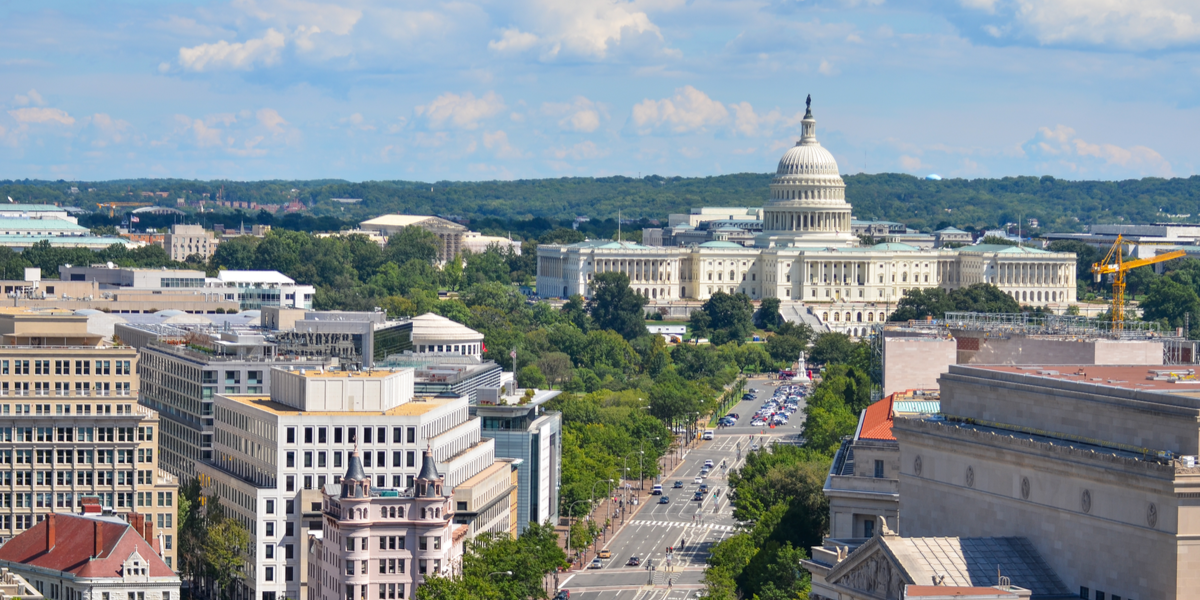From Paula Glover: What the Past Year has Meant for Energy Justice
Let's Save Energy
Alliance to Save Energy's Blog

A lot has changed in a year, and yet there is so much more to be done.
Yesterday was the one-year anniversary of George Floyd’s murder. The country was at a terrifying stage of the COVID-19 pandemic – a pandemic that has killed African Americans at 1.4 times the rate of white Americans. The spring had already seen one high profile racial justice case after another, including the murders of Ahmaud Arbery and Breonna Taylor. And so, as protests spread from Minneapolis to New York to Los Angeles, across the globe and to small towns across the country, it was clear that something was different this time – that perhaps we’re seeing a collective recognition of the fact that still in America today, African Americans live a radically different experience.
This is true in all aspects of life – from access to healthcare, to employment, criminal justice and even energy. In fact, I have spent most of my career trying to understand why we have a higher energy burden – why our communities have higher energy insecurity and what is needed to make it right. Today, the term “energy justice” has recently emerged to describe the goal of achieving equity in both the social and economic participation in the energy system, while also remediating social, economic, and health burdens on those historically harmed by the energy system. And what the data tells us is that our energy system has long contained systemic injustices. I’ll illustrate a few.
Energy justice is the goal of achieving equity in both the social and economic participation in the energy system, while also remediating social, economic, and health burdens on those historically harmed by the energy system.
My first job in the energy industry was right out of college, in an entry-level position taking payments from utility customers in Connecticut. I remember serving customers who were behind on their bills, some of whom were facing the impossible choice between keeping the lights on or paying for groceries for the week. This is not an uncommon choice: according to the Energy Information Administration, one in three U.S households faces energy insecurity. It is also not a choice faced equally across society: minorities face higher energy burdens – meaning they spend a higher percentage of their household income on energy bills – than white households. At the upper end of the spectrum are African American households, who face a 43% higher energy burden than white households, and Native American households, who face a 45% higher burden. The reason why isn’t just a matter of less income, but due to systemic inequalities such as housing quality, or increasingly as digital energy technology evolves, access to broadband.
Energy insecurity is the inability to adequately meet basic household energy needs. Energy burden is the percentage of household income spent on energy costs.
Another way that injustice is experienced in the energy system is through the health and environmental consequences of pollution. Just a few weeks ago, a new study found that African Americans are exposed to more pollution from every type of source – pollutants that cause tens of thousands of excess deaths each year in the U.S. Studies have also shown that minority neighborhoods are more likely to be heat islands – a phenomenon directly connected to the history of urban redlining – meaning that as our planet warms, these are the communities that will swelter the most. And, in the wake of natural disasters that will accelerate with climate change, minority communities face the most trouble rebuilding and attracting reinvestment.
And also, African Americans are not well represented in the energy economy. Nearly 7 million Americans are employed in the energy industry. Only 8% are African American, compared to a 12% national workforce average. Of these African American energy workers, just 17% report being in a leadership position, compared to 35% of white energy workers.
Whether it’s access to a healthy environment, economic opportunity, or just being able to keep the lights on without spending an egregious amount of their paycheck, African Americans have a different relationship to the U.S. energy system. What’s encouraging is that more people are starting to recognize that. The Black Lives Matter protests of 2020 were particularly powerful because they inspired many of us to “put our own house in order first,” and take a look at where inequities could be overcome in our personal and professional lives. Here at the Alliance, we adopted a set of internal principles, including commitments to contribute to greater social justice in society, “walking the walk” on equity communications and assessing progress with hard data, and improving our listening and transparency around all DEI initiatives.
We’re also starting to see movement in the policy world. President Biden’s Justice40 initiative is an unprecedented goal to deliver 40% of the benefits of federal environmental investments to disadvantaged communities. I would argue that energy efficiency investments should be the first solution turned to – no other solution addresses as many of the energy injustices outlined above, with efficiency able to cut energy costs by thousands of dollars, reduce emissions, and create jobs in every community across the nation. The Alliance is advocating for policies to create universal access to energy efficiency’s benefits, such as weatherizing low-income homes, creating a grant program that would prioritize providing small businesses with low or no-cost energy-saving upgrades, and retrofitting public buildings to improve resilience and efficiency in disadvantaged communities. These policies recognize that equity does not mean equal. The historic injustices in the energy system frankly mean that some communities need and deserve more investment to be able to fully participate in our energy future.
And that future by the way, is quickly becoming yesterday. It’s clear that the pain of the past year means we have to build back differently – and nowhere is that as true as in the rapidly transforming energy sector. There is a narrowing window to take the lessons of 2020 to heart and get policies in place that further energy justice.
So I would ask you to do two things as our country recognizes this sad anniversary this week. One, take a moment, and reflect on what the past year has meant for you – the lessons you’ve learned, and where you still hope to grow. And two, act. If you are a policymaker, how are you designing policies that overcome the unjust energy burdens facing so many families today? If you are in the energy industry, how are you making diversity, equity, and inclusion a core part of company culture? If you’re in technology, how are you making sure that that technology is reaching the people who would benefit from it the most? We have the ability – and the responsibility – to take action within our capacities to create a more just energy future. So let’s do it.
RECENT BLOG POSTS
STAY EMPOWERED
Help the Alliance advocate for policies to use energy more efficiently – supporting job creation, reduced emissions, and lower costs. Contact your member of Congress.
Energy efficiency is smart, nonpartisan, and practical. So are we. Our strength comes from an unparalleled group of Alliance Associates working collaboratively under the Alliance umbrella to pave the way for energy efficiency gains.
The power of efficiency is in your hands. Supporting the Alliance means supporting a vision for using energy more productively to achieve economic growth, a cleaner environment, and greater energy security, affordability, and reliability.



